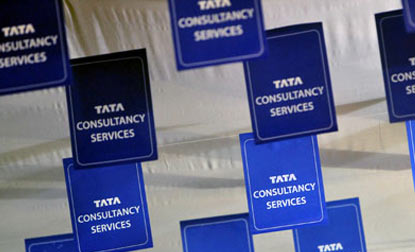
The Economic Times
Author : JOCHELLE MENDONCA
Location : MUMBAI
Article Date : 06/19/2014
With focus on new grads & lean mid-management layer, co’s margins are fattest in industry
While there is a lot of head-scratching among pundits on how Tata Consultancy Services has managed to keep its employee costs much lower than its peers, the secret could be its higher intake of freshers and a lean middle management. This focus on new hires has allowed India’s largest IT services player to earn the fattest margins in the software industry and also have considera ble flexibility on deploying its resources.
Analyst firm HfS estimated that the Mumbai-based company effectively achieved a 6.3% reduction in average employee costs every year over 20072013. During this period, the percentage of new graduates hired of the total rose from 50% to 80%. TCS has over 3,00,000 employees globally.
Hiring more freshers gives TCS the flexibility to use them in lower value and transactional activities, freeing up the more experienced employees for higher value work, HfS said. Also, freshers are easier to train in new skills required for digital services, a multibillion opportunity for TCS over the next few years.
“I see this labour model continuing to gain more traction as the industry matures, but also with more investments in niche experts with specific domain and consultative skills. The leading IT/BPO firms need more domain experts to remain differentiated,“ Phil Fersht, CEO of HfS, told ET.
Fersht said he expects to see the fresher-heavy, midmanagement-lite model to become the norm for other Indian IT players as well. TCS, which will add about 25,000 freshers in fiscal 2015, is also cutting training costs by digitising the process and making e-learning more convenient. The elearning could also make the trainees productive earlier, boosting utilisation and margins.
“We are piloting more digital training internally and we can extend this to students given the offer letter,“ Ajoyendra Mukherjee, head of global human resources, said last week at a press conference. “Obviously, I can’t do the three months training before they join but our assumption is this will help reduce training time and make them productive quicker.“
Mukherjee said TCS was yet to ascertain how much the project would reduce the training time.
The company had a utili sation rate of 77.9%, including trainees, for the fourth quarter of 2014, when it posted an operating margin of 29.1%.
Also helping TCS, and the rest of the industry, is the fact that salaries for college graduates have not increased in the last four years at about Rs 3.15-3.50 lakh annually. Mukherjee had said he does not expect fresher salaries to rise this year either. Salary hikes have also fallen to single digits from double digits before the 2008 global economic meltdown.
“TCS’ average cost per employee for fiscal 2014 was about Rs 14 lakh, compared to about Rs 18 lakh for Infosys. While most of this is due to a higher proportion of freshers vs lateral hires, it’s also because TCS has more efficiency in managing its costs,” said Harit Shah, research analyst with brokerage Nirmal Bang. Shah added that TCS’ employee costs as a percentage of revenue were at least 5-10 percentage points below the rest of the industry.
Other IT firms are also focusing on different ways to bring down employee costs, even as hiring is picking up due to a rebound in demand.
“There is focus on controlling costs,” said Alka Dhingar, regional manager at staffing firm Teamlease Services. “A new trend we are seeing, though still very small, is the hiring of workers who are retired. They have experience but are also less expensive.”

